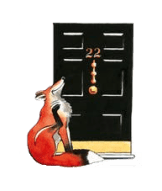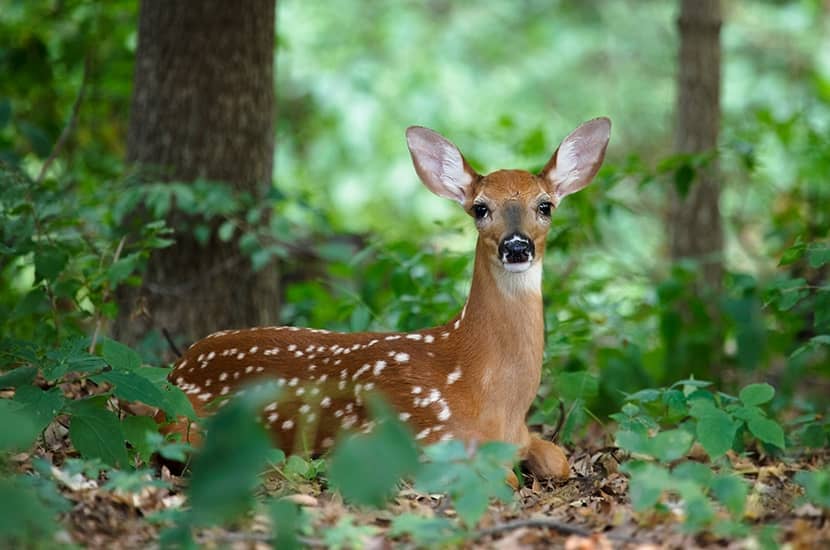One midnight last month, Jon Wiltshire, who lives in a cottage just outside our Sussex village, was woken by a loud bang. Sleepily, he wondered if an intruder had slammed the farm gate shut. He peered out, could see and hear nothing, and so went back to bed. The next day, he had to go to London. When he returned, his wife Anja said: ‘Come and look at this.’ The whole of their sitting room was covered with a fine powder of glass and some bigger shards. Inspecting the double-glazed window, they found a 10mm hole in the outer glass and a much wider break in the inner one. Further searching, a couple of days later, uncovered a rifle round lying on the far side of the room. The house is in a dip below a quiet lane. What seems likely is that poachers in search of deer had entered the field from the lane and fired downhill in the dark — not knowing, or perhaps not caring — that a house was there. The Wiltshires often sit in their sitting room by the fire (as one does on a winter evening). If they had happened to be there when the shot was fired, they could quite easily have been killed. The local estate confirmed that no one was shooting legally on its land that night.
Mr Wiltshire is keen the facts be known. Neighbours are pleased that this should happen because everything has been getting a bit out of hand. As with so many things, there is a Covid link, so there will be similar problems in many parts of the country. During lockdown, the lack of traffic and the fact that game-dealers stopped taking game made our always numerous local deer (mainly fallow, some roe) bolder and left them almost unculled. The fallow herds, some up to a hundred-strong, became more visible. Some even began trotting down the high street and into people’s gardens, scoffing their flowers. As normal life began to resume this summer, demand for venison in pubs and restaurants greatly exceeded supply. Christmas adds to this. As the price rose (£1.50 per kilo, so say £40 or more for a normal-size fallow deer) poachers, as well as the legal trade, sprang back into life. Some dealers, I gather from someone who knows, were accepting game which did not come with the hunter number the rules demand and logging it under other people’s names. A well-known gang of local poachers were making weekly deliveries of a trailer-load of carcases to a Home Counties dealer the other side of the Thames.
Legitimate operators, like one local deer-stalking enterprise I know, feel that the poachers — with some of whom they are all too familiar — are taking the mickey. Some even poach just for devilry, leaving the entire carcase lying where they have shot it, or cutting off the head as a trophy and leaving the rest. There is also a procedure known as the ‘three-car trick’. A man in the first car spots a deer in a field, shoots it from his window and leaves the scene at once. The second car driver, with no incriminating rifle on board, pretends to have spotted the carcase by chance, and helpfully pulls it from the field to the side of the road. He then leaves. The third vehicle arrives. The driver gets out, claiming to have spotted ‘roadkill’, and puts the dead beast in his boot. Locals call this poaching ‘Wild West stuff’, and it certainly is not suitable for the fairly unwild East of Sussex. It is aggressive robbery, often cruel to the deer, and, as Mr and Mrs Wiltshire can attest, highly alarming for innocent local human beings. I hear favourable reports of police interest. There are some clear suspects.
George Osborne is always attentive to the zeitgeist, so it is an encouraging sign of the times — in the Times — that he recently announced he has ceased to wear his T-shirt that says ‘WOKE’ on it. As the new chairman of the British Museum, he is trending in a good direction. His defence of the museum as ‘one of the few places in the world where you can see the great civilisations of the world side by side’ is right. But if, as he says, he sticks up for ‘the middle where most people are’, he will soon discover some staff problems. Under the still current director, Hartwig Fischer, the museum has demoted Rysbrack’s bust of Hans Sloane, whose great collection was one of the museum’s three founding elements. ‘We have pushed him off his pedestal,’ Dr Fischer exulted. The bust is now used to help illustrate ‘the exploitative context of the British Empire’. Shortly after the death of George Floyd, Dr Fischer blogged that ‘We [the museum] are aligned with the spirit and soul of Black Lives Matter everywhere.’ BLM are committed to the notion that racism arises from ‘whiteness’ — a proposition which, when you think about it for three seconds, is itself racist and is therefore nowhere near that majority middle which Osborne seeks.
A century to the day on which the Sinn Fein leadership signed a peace agreement which led to the creation of the Irish Free state and the partition of Ireland, the same party’s leadership opposed a Bill in the Northern Ireland Assembly which would have banned both real hunting and trail-hunting. As a result, the ban was defeated by 45 votes to 38. Even in that party, a strand of common sense can sometimes be found.
Some years ago, I noticed that food and drink products had begun to speak in the first person. ‘Don’t look at my bottom!’ it said, unamusingly, on the relevant bit of an Innocent smoothie. A malt loaf called Soreen, popular in our household, now talks this way. ‘I like cool, dry places best,’ the packet says — and then comes on strong: ‘How to enjoy me: Toast me under the grill, pile me with jam, top me with cheese or just enjoy me as I come,’ it gushes. ‘Squidgy enough for you?’ it asks, suggestively yet abjectly. ‘I was perfect when I left the Soreen bakery, but if I’ve lost my squidge (or fallen short in any other way) then please get in touch. Your statutory rights are not affected.’ Surely the most one would ever want from a malt loaf is the chance to eat it, not to let it drag one into a sadomasochistic relationship.







Comments